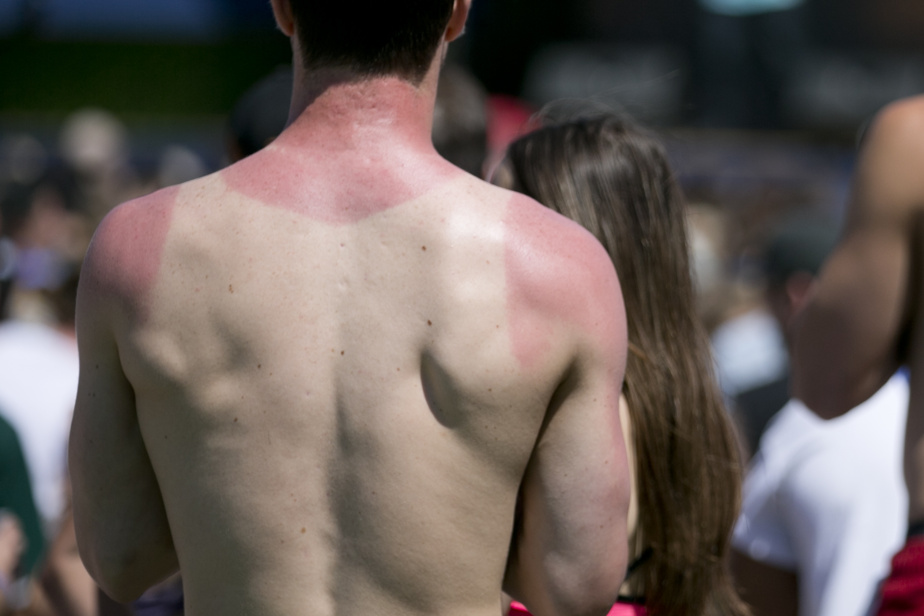Moles and other small brown spots are something that almost everyone has. How can you tell a harmless spot from a melanoma – the most serious type of skin cancer? Dermatologist Joël Claveau helps us see things more clearly.
What is melanoma?
Melanoma is a skin cancer that usually develops on healthy skin or occasionally from an existing mole. In France, it is called black tumor. Unlike most other types of skin cancer, melanoma can spread rapidly and metastasize when diagnosed late. Its incidence is increasing.
1/44
Likelihood of developing melanoma in your lifetime, according to 2019 statistics from the Canadian Cancer Society
The importance of consultation
“As a result of the COVID-19 pandemic, many people have remained fearful of consulting their doctor, and access to a family doctor is increasingly difficult,” notes Dr.r Joël Claveau, director of the melanoma and skin cancer clinic at the Hôtel-Dieu de Québec University Hospital. When a melanoma is caught late, it’s a completely different story: it’s major surgical operations, it starts in the lymph nodes, immunotherapy must be given to prevent it…
Quebec has 200 dermatologists… for nearly 9 million people, almost all of whom have moles, brown spots, wisdom marks or birthmarks… “Melanoma is the needle in the haystack,” summarizes Dr.r Joël Claveau. When you notice an abnormal lesion on your body, you should first consult your family doctor. If necessary, the doctor can send the file to a dermatologist, or even consult one through a teledermatology program. People who do not have a family doctor can contact a clinic or Info-santé 811.
A B C D E
There is a simple rule to help professionals recognize a melanoma: the ABCDE. A for asymmetry; B for uneven border; C for color (the color is not the same everywhere); D for diameter (greater than 6 mm) and E for evolution. “The E is not the most reliable criterion,” warns the Dr Claveau: It should serve to alarm us, and not to falsely reassure us.
Some pictures of melanoma
-

PHOTO PROVIDED BY DR JOEL CLAVEAU
A thin melanoma on the calf of a tanned sixty-year-old woman
-

PHOTO PROVIDED BY DR JOEL CLAVEAU
The border of the melanoma is uneven.
-

PHOTO PROVIDED BY DR JOEL CLAVEAU
This melanoma required major surgery and removal of a sentinel lymph node.
-

PHOTO PROVIDED BY DR JOEL CLAVEAU
A diameter of more than 6 mm is a warning signal.
-

PHOTO PROVIDED BY DR JOEL CLAVEAU
Early melanoma on the back of a forty-year-old, among several moles
-

PHOTO PROVIDED BY DR JOEL CLAVEAU
“The prognosis is very good,” says Dr.r Keystone.
1/6
Melanoma or keratosis?
Melanomas must be distinguished from seborrheic keratoses. Seborrheic keratoses, which are very common in older people, are the most common pigmented lesions. They are brown, rough, wart-like growths. They are not precancerous and do not require treatment unless they cause discomfort.

PHOTO PROVIDED BY DR JOEL CLAVEAU
Seborrheic keratoses are benign and common lesions.
Body parts
In women, melanomas are often found on the legs, and in men, more on the back. These are areas that are regularly exposed to the sun. So-called “nodular” melanoma (15 to 20% of all melanomas) usually appears on the face, chest or back, but can also be observed in areas not exposed to the sun. Lentiginous melanoma of the extremities, which is rarer, appears on the soles of the feet, on the palms of the hands and under the nails and mainly affects people with dark skin.
Prevention
The primary cause of melanoma? Severe sunburn, often suffered at a young age, answers Dr.r Claveau. Hence the importance, he says, of protecting children well. “According to social media, it’s trendy and safe to be tanned, but all that is nonsense,” he warns. Yes, you have to wear sunscreen, but you also have to wear a hat, keep your clothes on, stay in the shade… The best way to convince teens “is to tell them that it will age their skin,” advises the dermatologist.
Survival rate
Although the incidence of melanoma is increasing, so are survival rates. In the last decade, melanoma-related mortality rates have decreased by an average of 3% per year, according to statistics from the Canadian Cancer Society. “Immunotherapy has completely revolutionized the treatment of melanoma,” says Dr.r Joel Claveau.
89%
Five-year survival rate for melanoma in 2024, according to Canadian Cancer Society estimates
